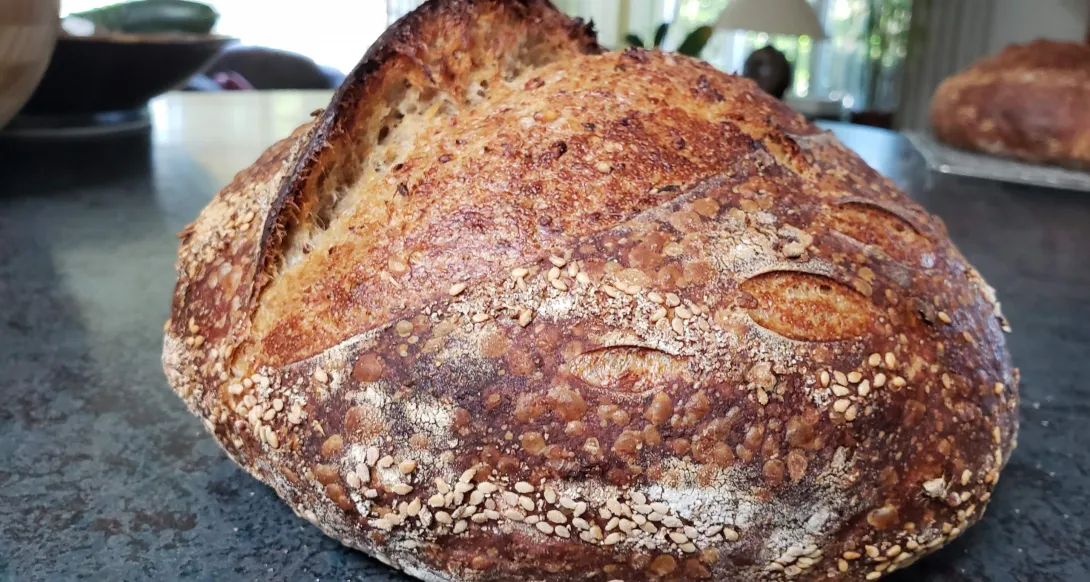Cedarmountain's blog
Khorasan Oat Sourdough Bread
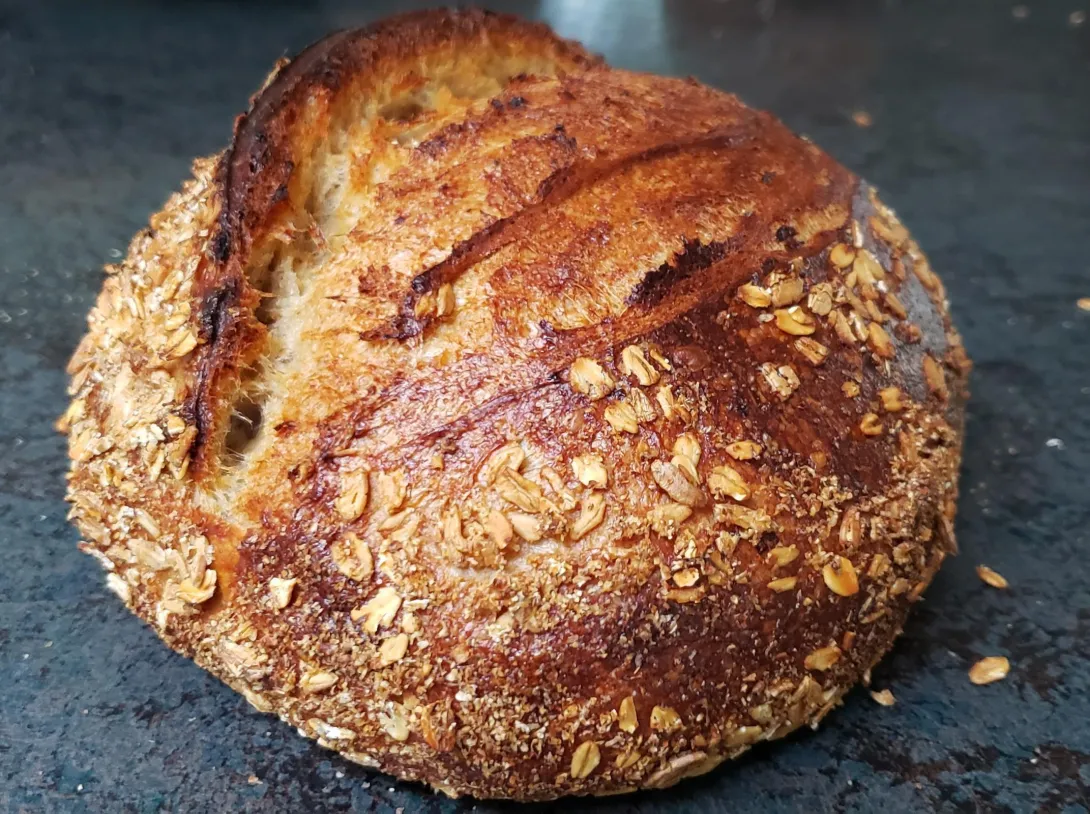
This is a khorasan oat sourdough, a lighter bread than I usually bake. I wanted a light, soft crumb while still including as much fresh milled whole grain as possible. In "Tartine 3" Robertson explains how he accomplishes this by way of various additions to his basic doughs using high extraction flours, porridges, soakers, sprouted grains. So for this bread I mixed 300 g fresh milled high extraction khorasan flour with 700 g all purpose white flour, autolysed with 750 g water for 3 hours.
A Genesis Style Sourdough Bread
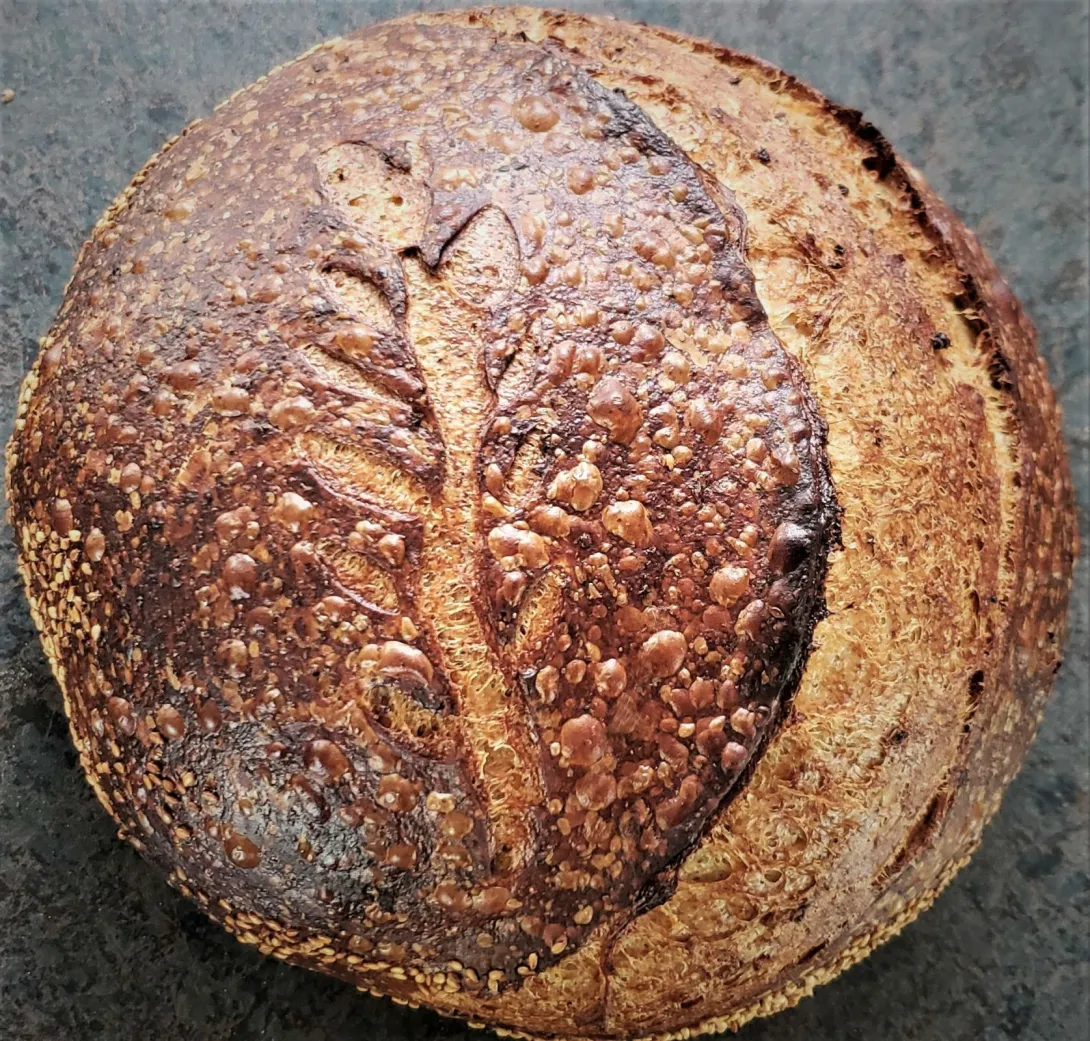
When I began making bread a few years ago it was with a determination to bake nutritious and wholesome bread. What I did not fully understand or appreciate is the broad scope and variety, the many variables affecting the process, the simple and complex beauty of a well baked loaf of bread. And when I think of the countless varations of bread baked over thousands of years it is humbling to realize that each loaf I bake has very likely been baked before by someone else at another time. This was eloquently expressed in a blog comment by Andy (Syd-a) some years ago on TFL:
Scones
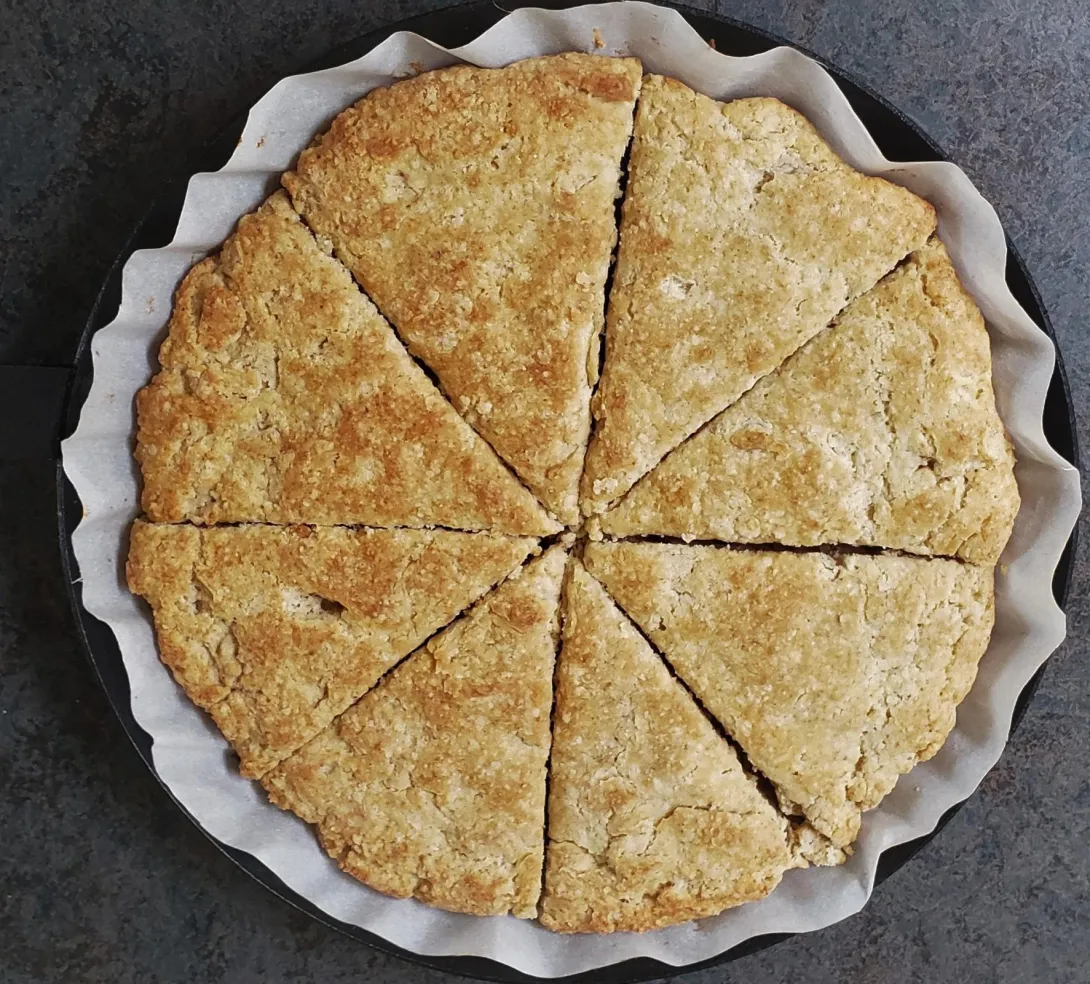
I don't know if this would be considered a traditional scone - perhaps a variation on a traditional scone? Scone purists might even consider it an aberration. I served these to a nice group of women at a Spring tea event a few years ago and several commented on how much they enjoyed the "biscuits", reminded them of scones! In my thinking scones are more crumbly, tender whereas a good biscuit is fluffy, almost flaky soft...both benefit from minimal handling and lots of butter.
A Variation on Tartine 3's "Ode to Bourdon" and Some Experimental Slashing
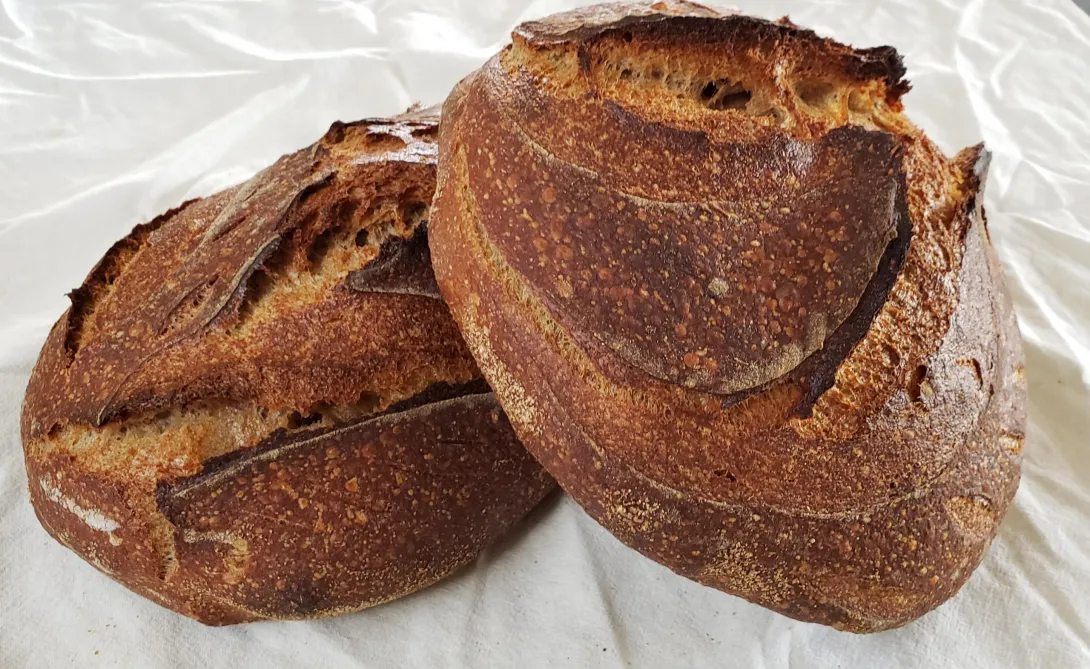
Common sense suggests to tweak bread recipe variables one at at time so as to be able to better isolate and understand the effect of each variable. That is my usual practice but this was a "let's try all this and see what happens" weekend bake.
- Log in or register to post comments
- 21 comments
- View post
- Cedarmountain's Blog
Fermented Oat Sourdough
This is today's daily bread...made with rolled oats fermented overnight with levain and water before being mixed into a rye/spelt/Marquis wheat dough along with some chopped almonds; shaped loaves were dusted with sifted bran and some sesame seeds, cold proofed overnight and baked this morning direct from the fridge in pre-heated DOs.
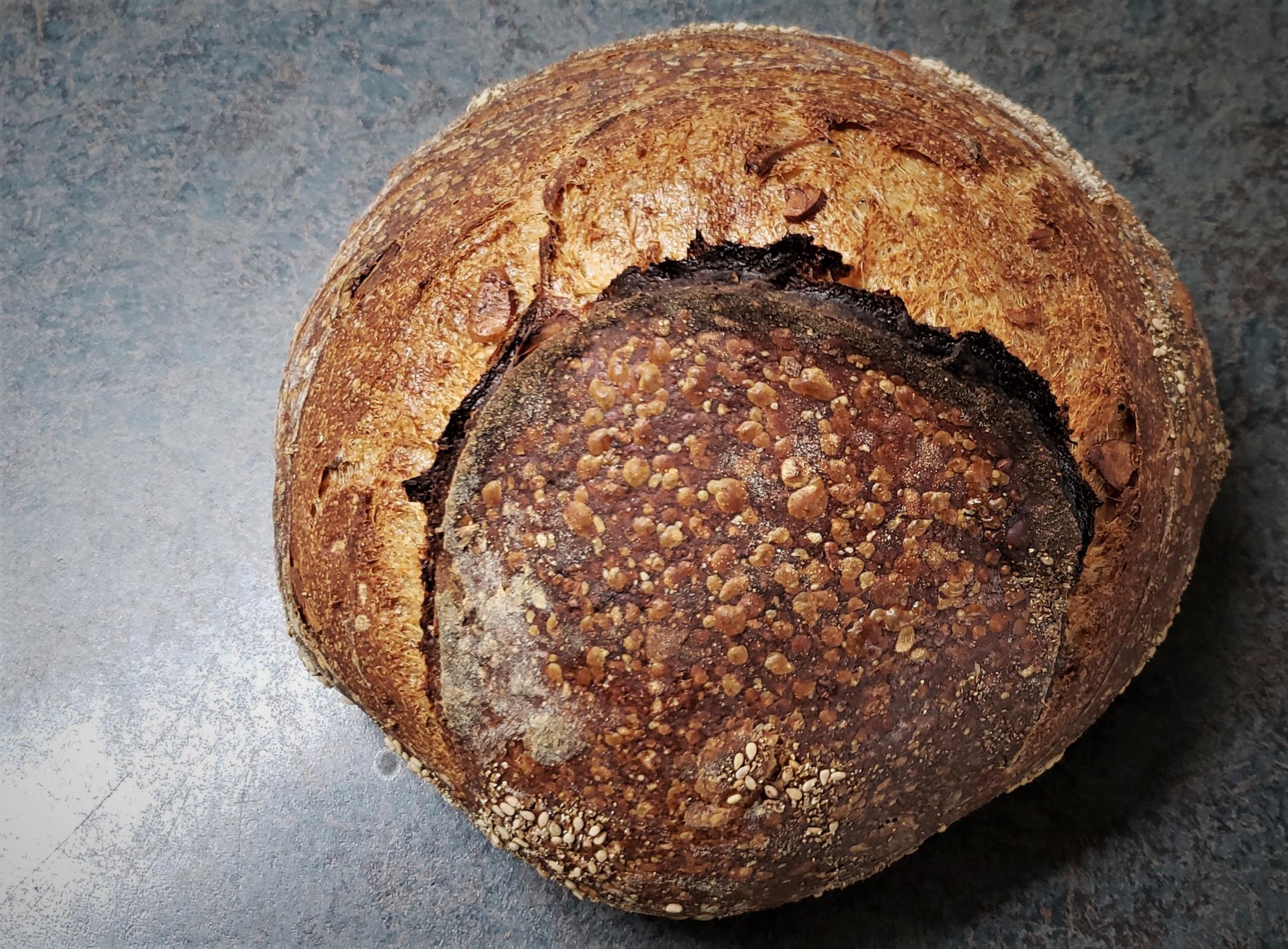
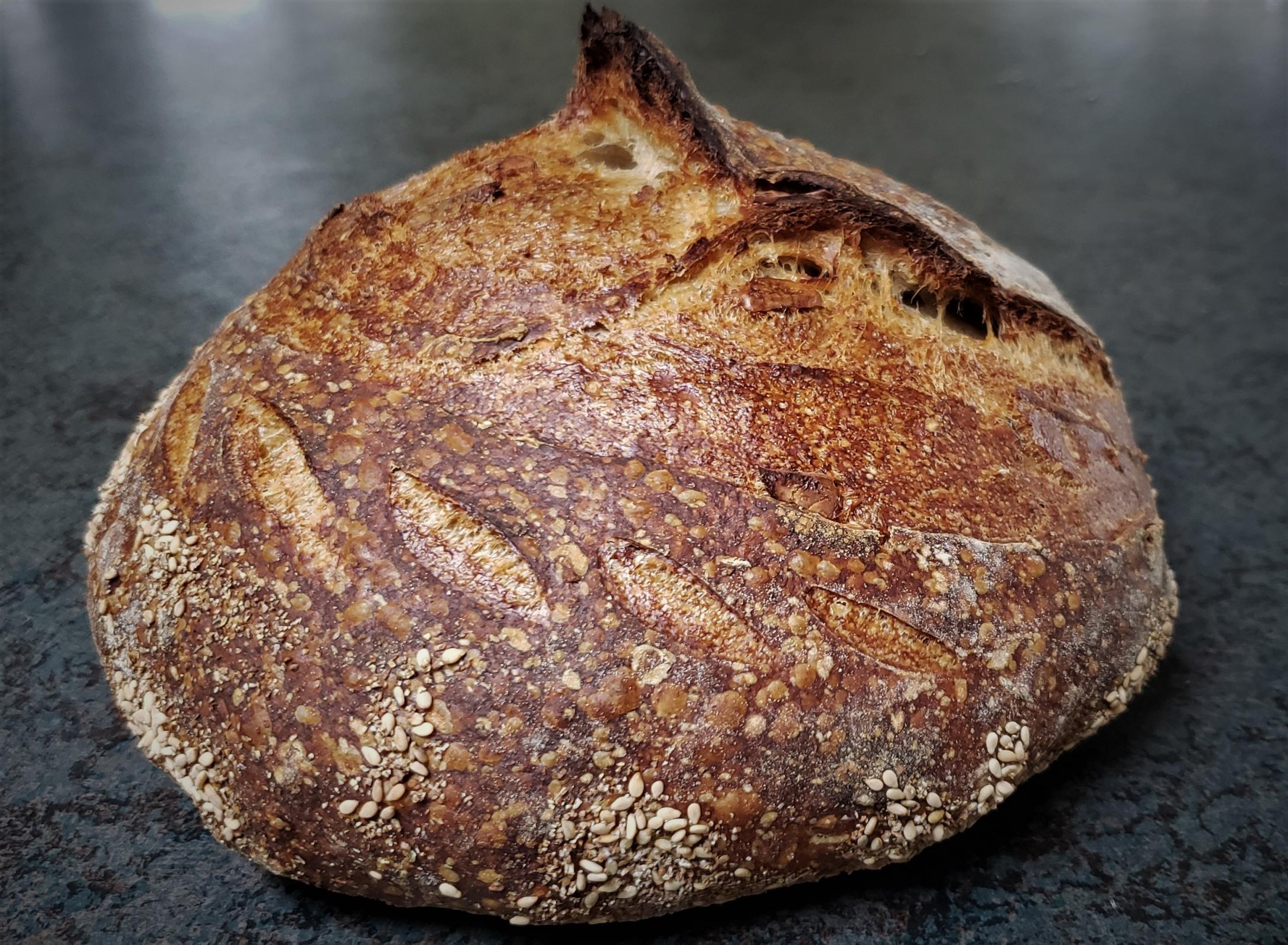
- Log in or register to post comments
- 23 comments
- View post
- Cedarmountain's Blog
Grass Bread
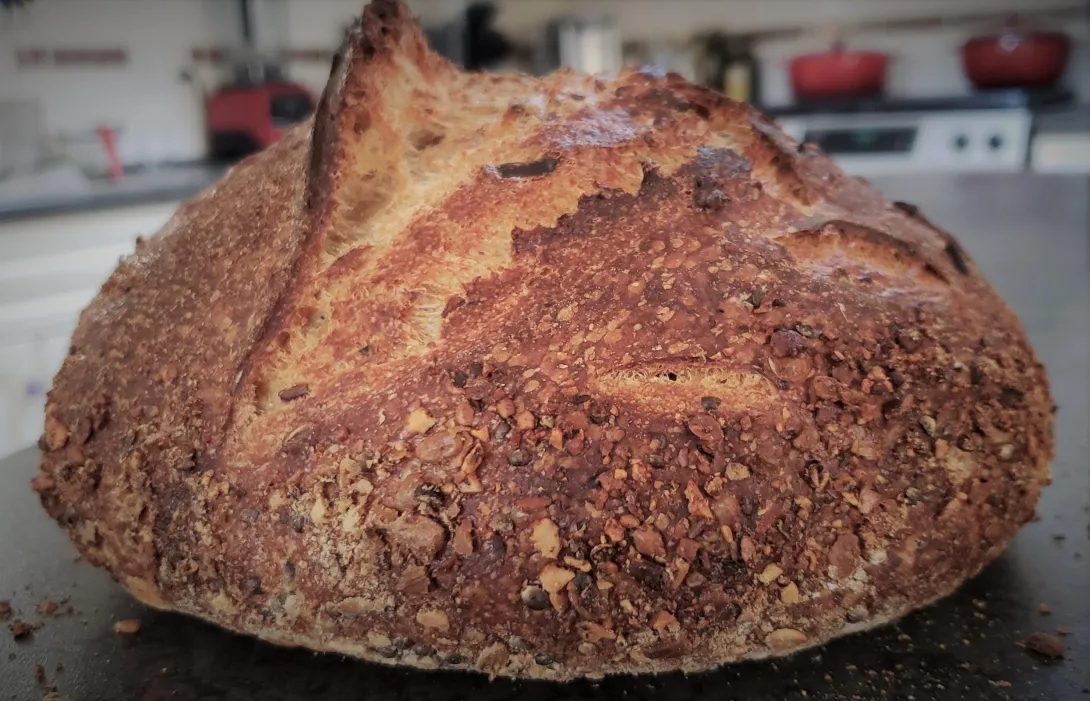
I was thinking about grass a few days ago while finishing the last lawn mowing of the season and while not really appreciating my lawn grass as such, was struck by the fact that wild grasses are the archetype for the many grains we use to make our bread. Many species/strains of wheat and other grains can trace their origins as wild grasses that have been cultivated, modified and preserved over many years as food crops. So, with that in mind, I baked what I decided to call "Grass Bread", as inspired by the grass roots of our modern grains.
Black Rice Porridge Bread
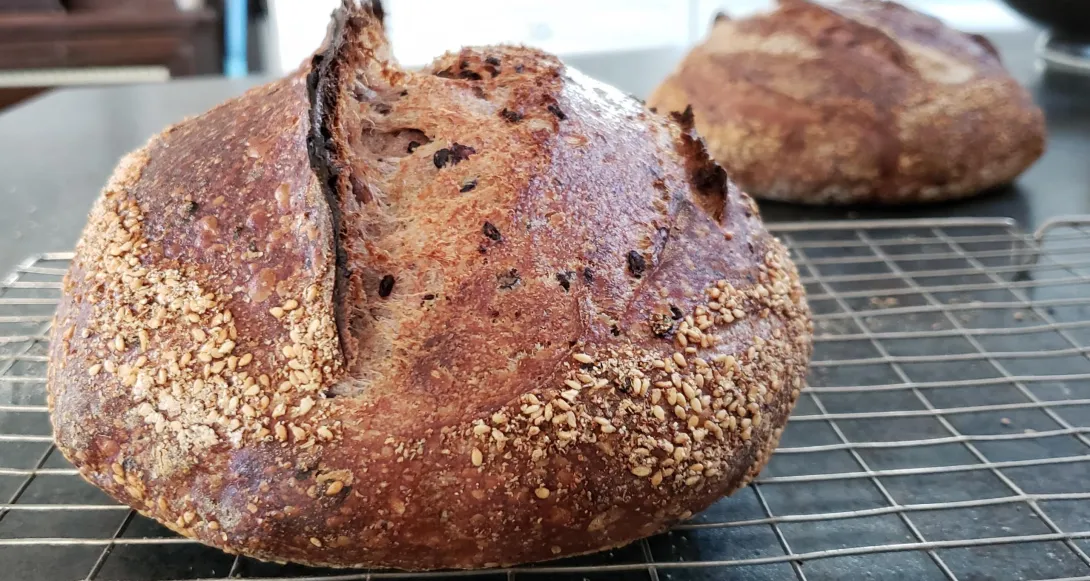
This bread is based on Chad Robertson's Tartine 3 brown rice porridge bread. As Robertson says, "...combine well-cooked whole grain rice with a highly hydrated whole wheat dough and let the loaves fully ferment with natural leaven to make the nutrients contained within the finished bread readily available for digestion." I opted to use organic black rice for its rich nutritional value and cut back on the total amount added to the dough to keep the bread a bit lighter; I also added a small amount of oat porridge for complimentary taste and texture. The dough was mixed with
Sourdough Donuts
Sourdough donuts....some coated with cinnamon sugar, some with a cardamom honey glaze. I used an egg, milk, sugar, butter dough with a sourdough levain; slap and folded, proofed at room temperature for 5 hours; refrigerated over night; rolled/cut into rounds and proofed at room temperature for another 2 hours before deep frying at 350 F for about 2 minutes per side. I didn't spend a lot of time folding and shaping each donut so they turned out pretty "rustic" looking but I think they tasted pretty good, nice soft bready texture too.

